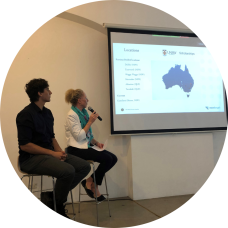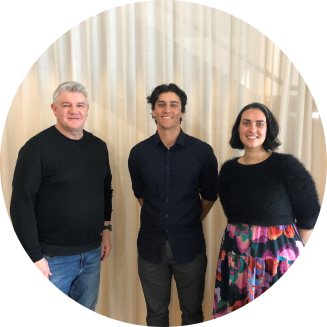Until you’ve lived in, or even travelled to the remotest parts of Australia, it’s hard to appreciate just how different life is there compared to our cities. And for Indigenous Australians, there’s the additional cultural divide, with 60,000 years of history shaping thoughts, practices and beliefs.
For years we, as a nation, have simultaneously expected Indigenous Australians to adapt to the European model of healthcare while not offering adequate access to this care, sometimes due to cost, availability or geography, but often due to a lack of understanding the specific needs of Indigenous people.
Wavelength, with its nationwide reach, has long-since seen this gap and has actively worked to close it, through placement of doctors in rural and remote locations.
In additional to this, Wavelength is actively working to address the cultural gap between Indigenous and non-Indigenous medicine, in part by funding a $25,000 per annum scholarship from 2023 for an Indigenous student to study medicine at the University of New South Wales.
The scholarship, which began as a travel scholarship offering a one-off payment of $5,000 for students located outside of metropolitan Sydney is currently awarded to second-year Indigenous medical student Patrick Kerrigan. The scholarship underpins the ideas of cultural respect and cultural safety.
Cultural respect, as defined by the Australian Institute of Health and Welfare (AIHW) in the Aboriginal and Torres Strait Islander Health Performance Framework 2020 summary report “is achieved when the health system is a safe environment for Indigenous Australians and where cultural differences are respected.” [1]
In part this can be achieved by increasing the number of Indigenous doctors, nurses, midwives and support staff in our health system, but also by improving non-Indigenous medical practitioners’ understanding of issues of cultural importance for Indigenous Australians. Combined, these elements create a feeling of cultural safety – where Indigenous patients know, understand and trust the medical treatment options made available to them.
Whether through better communication, inclusion of family members, respect for culture or empowerment in decision-making, understanding and implementation of cultural respect helps to break down barriers of racial discrimination, and ultimately encourages Indigenous Australians to seek medical help when they need it.
 Having spent some time as a child in remote Indigenous communities, scholarship recipient Patrick Kerrigan has seen first-hand the “gap” in Indigenous healthcare and understands the opportunity he has been given to help reduce it by becoming a doctor.
Having spent some time as a child in remote Indigenous communities, scholarship recipient Patrick Kerrigan has seen first-hand the “gap” in Indigenous healthcare and understands the opportunity he has been given to help reduce it by becoming a doctor.
“I definitely want to work in rural and remote communities up in Arnhem Land like my parents have done with teaching because I feel like that’s where a huge burden of health and disease lies and where I can really make a difference to communities there,” said Patrick.
Patrick’s experiences have shown him the extent of the challenges facing Indigenous communities.
“There’s inadequate access to healthcare, especially in rural and remote communities. Just being able to access quality healthcare, whether that’s a specialist, or an Indigenous doctor. I think that’s a huge issue for Indigenous communities.”
You might question whether one scholarship for one Indigenous student can really make a difference. For Wavelength Partnerships Manager Carole Peterson, it’s a case of “many hands make light work”.
“Patrick’s experiences have inspired him to pursue a career in medicine enabling him to give back to the Indigenous people he is connected to, which we’re sure will in turn inspire other Indigenous youth to consider medicine as a career choice too. Our scholarship helps in some way to make that happen, but it is also Patrick’s drive and first-hand understanding of Indigenous issues that will make the real difference in closing the gap.”, said Carole.
Looking at the bigger picture, AIHW statistics [2] show that while some progress is being made, there is still much work to be done. In 2018-19, 32% of the 243,663 Indigenous Australians who didn’t access health services when they needed to said they did so due to cultural reasons (such as language, discrimination or cultural appropriateness).
In 2020, 22% of Indigenous adults reported experiencing racial discrimination by doctors, nurses or medical staff, and Indigenous patients were discharged against medical advice at five times the rate of non-Indigenous, inferring a lack of cultural safety, such as feeling that their treatment wasn’t appropriate to their needs.
It is important to note that geography isn’t the only factor in the gap in care between Indigenous and non-Indigenous Australians, and that other factors such as income and level of education also play a part, making this an issue that touches all corners of the country.
 As for Wavelength, we’re offering our support for as long as it is needed.
As for Wavelength, we’re offering our support for as long as it is needed.
“We’re committed to doing our part to close the gap in healthcare between Indigenous and non-Indigenous Australians through this scholarship and previous ones, and through our continued support of worthwhile charities.”
[1] Australian Institute of Health and Welfare, Aboriginal and Torres Strait Islander Health Performance Framework 2020 summary report (further information can be found here: https://www.indigenoushpf.gov.au/)
[2] Australian Institute of Health and Welfare, Cultural safety in healthcare for Indigenous Australians: monitoring framework. (https://www.aihw.gov.au/reports/indigenous-australians/cultural-safety-health-care-framework/contents/summary)

